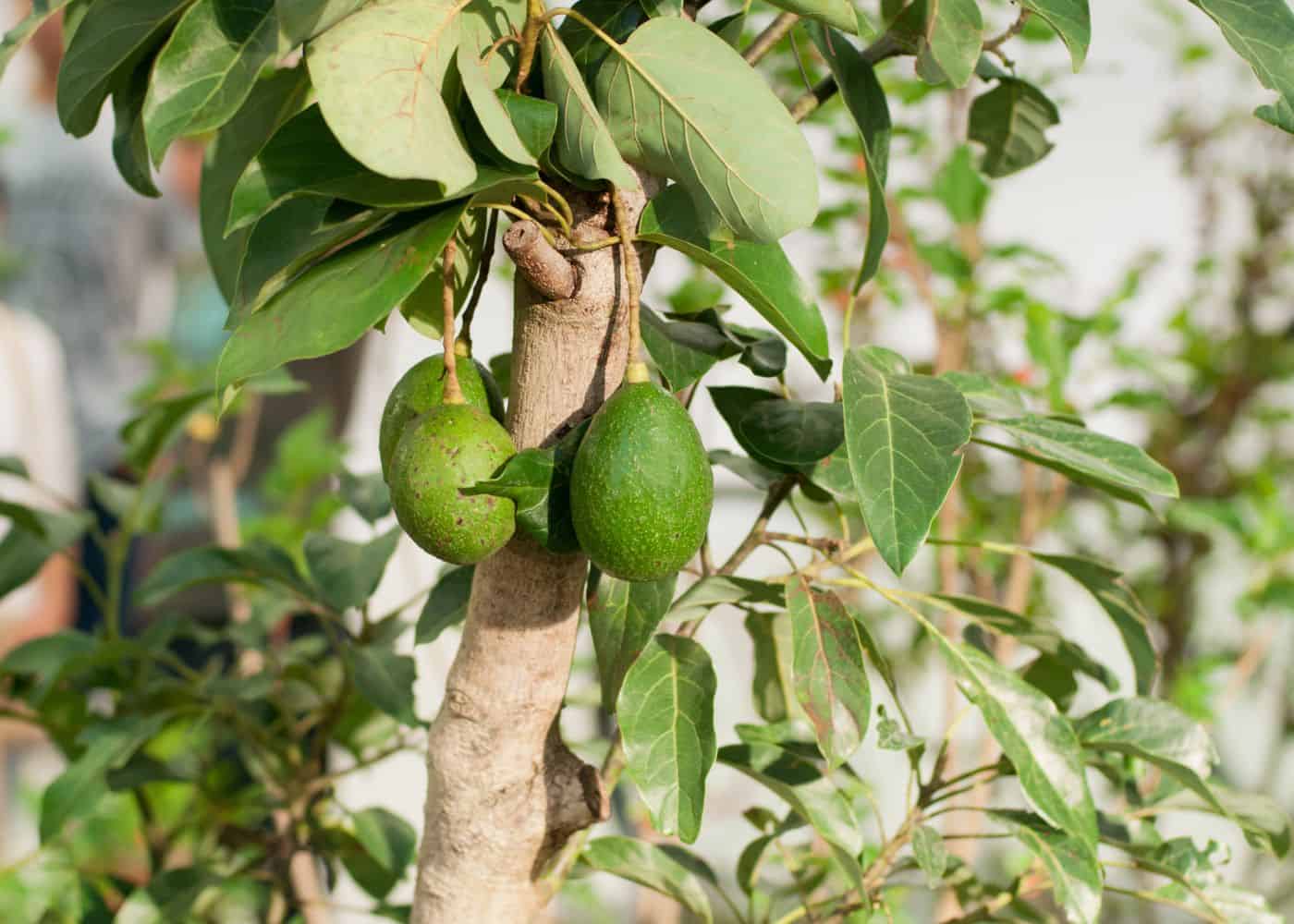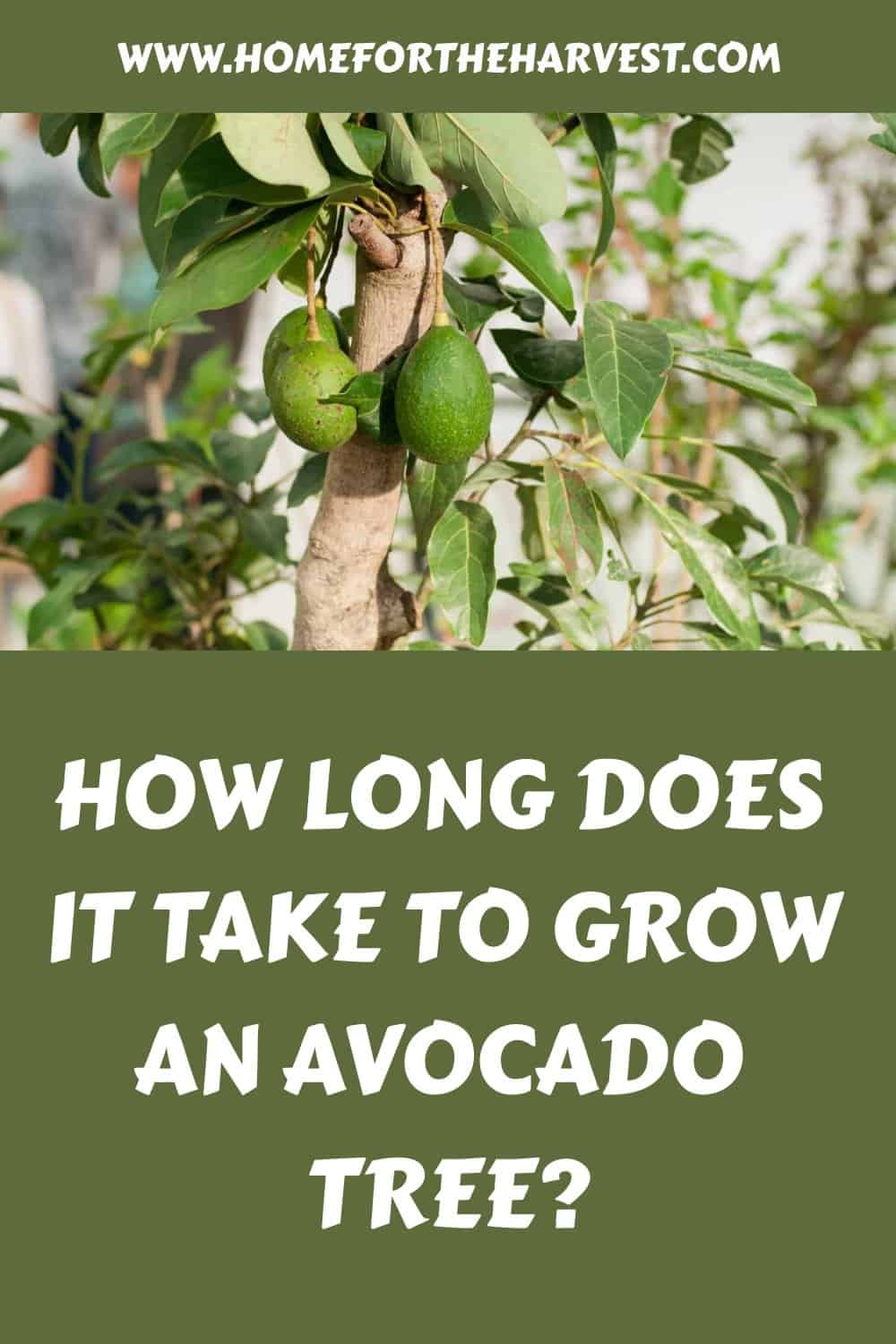If you’ve ever wondered how long it takes to grow an avocado tree, the answer might surprise you. While the trees can start to bear fruit in 3-5 years in ideal climates, they usually don’t put on a full crop until they reach 7-10 years old.
How long does it take to grow an avocado tree?
Growing an avocado tree is a rewarding experience that can bring years of joy and delicious avocados. However, it’s important to understand the timeline for growing an avocado tree so you know what to expect. On average, it takes anywhere from 3-5 years before your first harvest. If you’re planting a small seedling, don’t expect a bountiful harvest until more like 7-10 years after planting.
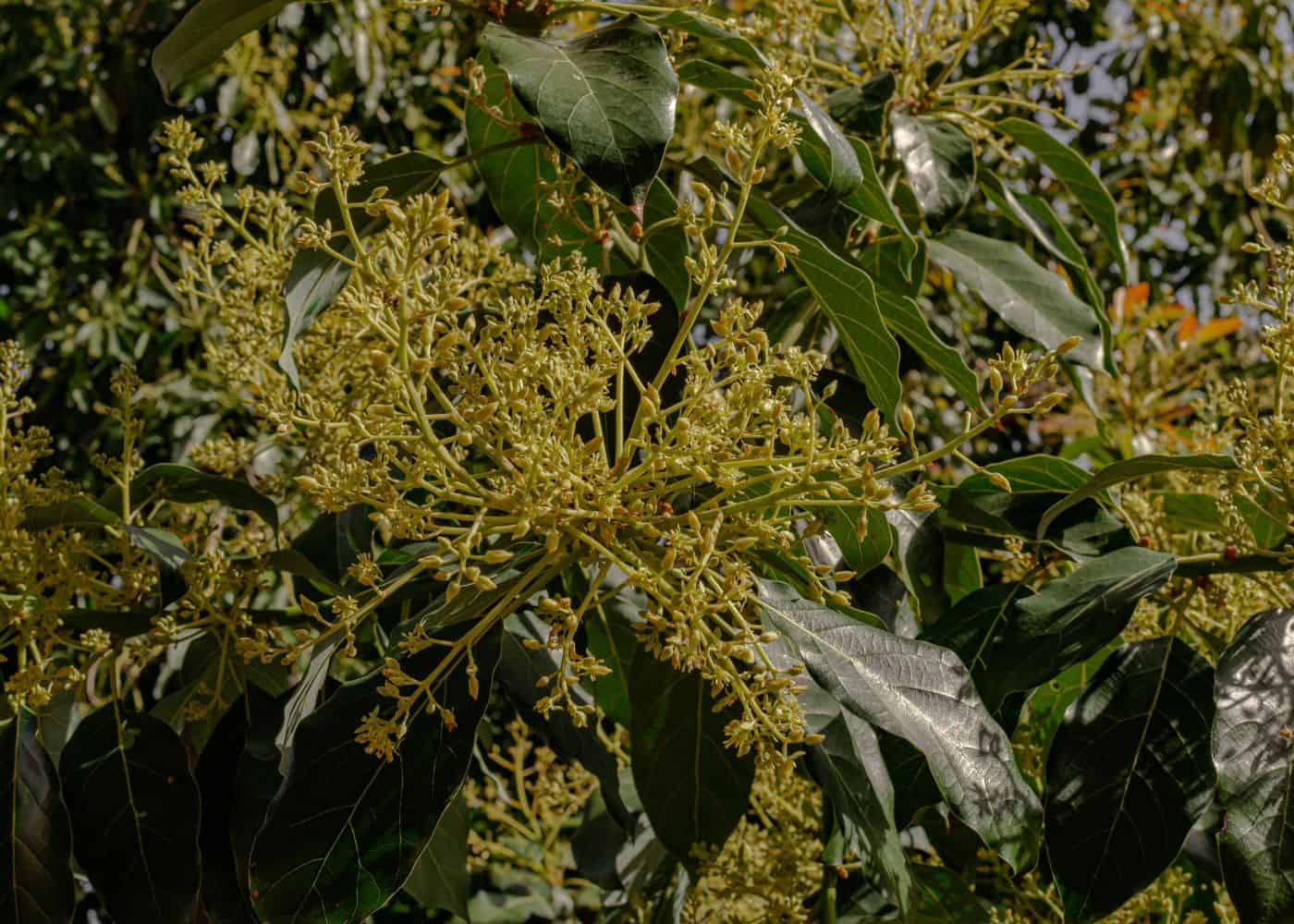
Planting your avocado tree
When planting your avocado tree, make sure you select a spot with plenty of sunlight and well-draining soil. Dig a hole twice as wide as the root ball and just deep enough for the roots to fit comfortably in the ground. Place your tree in the hole, fill it up with soil, then water thoroughly until moist but not soggy. After planting, be sure to keep your newly planted avocado watered regularly during its first year of growth.
Growth timeline
The growth rate of an avocado tree varies depending on climate conditions and other factors such as soil quality or irrigation frequency. Generally speaking though, most trees will reach between 6-10 feet tall within their first three years after being planted – some even reaching heights up to 20 feet. During this time they should also begin producing flowers which eventually turn into fruit if pollinated correctly by bees or other insects like butterflies or hummingbirds.
Harvest time
Once established (3+ years), you can expect to start harvesting avocados from late summer through early winter each year depending on when they were pollinated/fruited initially (usually around April). The size of these fruits will vary greatly based on how much care was given throughout their development period – larger fruits are usually indicative of more attention paid towards watering & fertilizing schedules etcetera.
Maintenance requirements
Avocado trees require regular maintenance in order for them to produce healthy fruit each season; pruning away dead branches helps promote new growth while keeping weeds at bay ensures adequate nutrition levels remain consistent throughout all stages of development (from the seedling stage onwards). Additionally, providing adequate amounts of fertilizer every few months helps ensure optimal health status as well.
With the right care and patience, an avocado tree can take up to four years before it produces its first fruit. However, with careful planning and dedication, you can enjoy the rewards of your labor sooner. Let’s look at what steps you need to take when planting an avocado tree.
Planting an avocado tree
Planting an avocado tree is a great way to add some greenery and fresh produce to your home. With the right care, you can enjoy avocados from your own backyard for years to come. Here’s what you need to know about planting an avocado tree:
Avocado trees thrive in well-draining soil with plenty of organic matter. A good mix would be one part potting soil, one part compost, and two parts sand or perlite. Make sure the pH level is between 6 and 7 before planting.
Water regularly but don’t overwater; young avocado trees need about 1 inch of water every week during their first year of growth (more in hot climates). Once established, they require less frequent watering—but still, make sure they get enough moisture during dry spells or periods of extreme heat.
Harvesting avocados
Depending on variety and climate conditions, it may take anywhere from 3–7 years for an avocado tree to start producing fruit. To harvest avocados at peak ripeness when ready, gently twist them off the stem with your hands or use pruning shears if necessary.
Growing conditions
Avocado trees prefer full sun exposure but can tolerate partial shade as well; however, too much shade will reduce flowering and fruiting potential significantly over time so try to keep them in a sunny spot whenever possible. They also do best when temperatures stay consistently above 50°F (10°C) so avoid areas that experience frosty winters if possible—otherwise provide protection such as covering with burlap or plastic sheeting during cold snaps/freezes until spring arrives again each year
If your avocado tree isn’t growing properly despite providing adequate sunlight, water, and soil quality, check for pests like aphids or scale insects which can cause stunted growth by sucking the sap out of leaves and stems. Treat these issues immediately using insecticidal soap spray available at most garden centers and nurseries. Additionally, watch out for signs of nutrient deficiencies such as yellowed leaves; supplement accordingly with a fertilizer formulated specifically for citrus and other fruit-bearing plants if needed.
With the right soil, water, and sunlight, planting an avocado tree can be a rewarding experience – now let’s look at how to properly care for it so that you can enjoy its fruits for years to come.
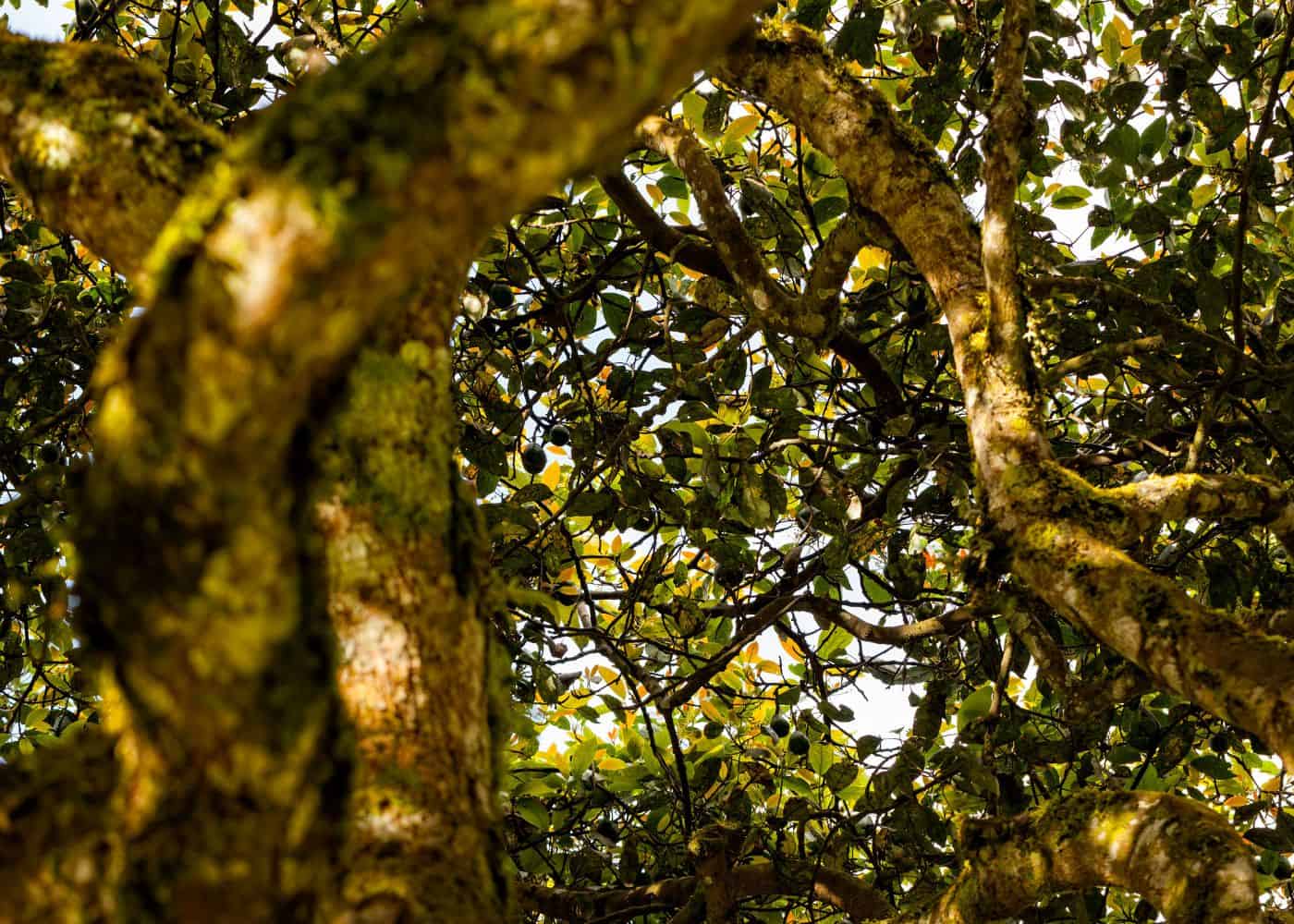
Care and Maintenance
Here are the basics in terms of avocado care so that your tree reaches maturity quickly.
Pruning
Pruning an avocado tree is important for its health and growth. Prune the tree to remove dead, diseased, or damaged branches as well as any that are growing in a direction you don’t want them to go. Also, prune away any water sprouts (shoots coming off of larger branches) and suckers (shoots coming up from the base of the trunk). When pruning, use sharp pruners and make clean cuts at a 45-degree angle just above a bud or branch junction.
Fertilizing
Avocado trees need regular fertilization throughout their life cycle to stay healthy and produce fruit. Use a fertilizer formulated specifically for avocados; these usually contain higher levels of nitrogen than other types of fertilizer. Apply it around the drip line (the area beneath where rainwater drips off leaves) every two months during spring through summer when your tree is actively growing, then reduce the frequency in fall and winter when growth slows down.
Pest control
Pests can be problematic for avocado trees if not controlled properly. Common pests include scale insects, mealybugs, thrips, aphids, mites, caterpillars, and whiteflies – all of which can damage foliage or weaken plants by sucking out sap from leaves or stems. To control pests organically without using harsh chemicals on your plant try introducing beneficial predators such as ladybugs into your garden or spraying with neem oil solution once every few weeks until pest populations have been reduced significantly.
With regular care and maintenance, you can ensure that your avocado tree will thrive and bear fruit for many years to come. Now, let’s look at how to properly harvest those avocados when the time is right.
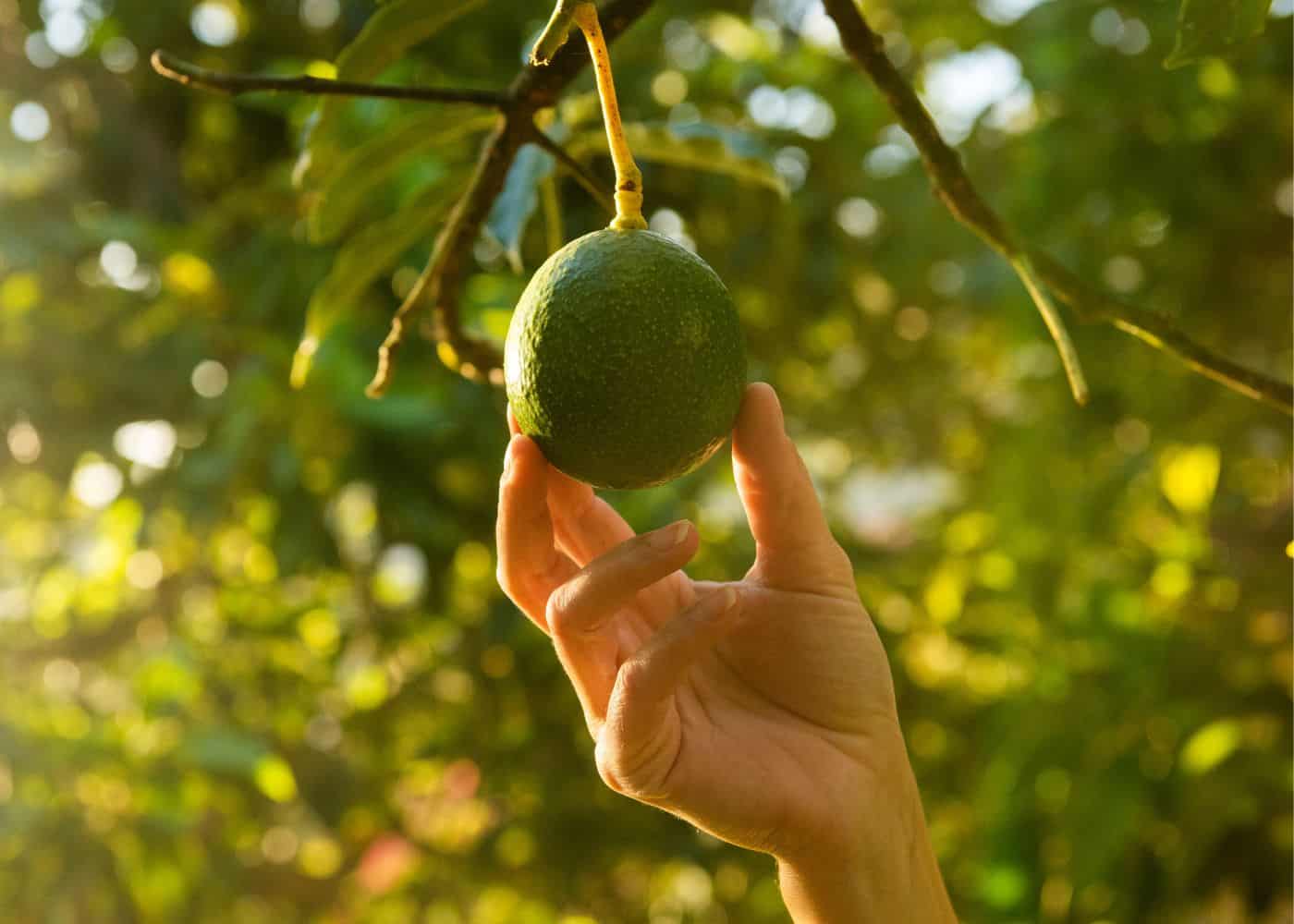
Harvesting avocados
Harvesting avocados is a rewarding experience for any gardener. Knowing when to pick your avocados can be tricky, but with the right information, you can get it just right.
Avocado trees typically take anywhere from three to five years before they begin producing fruit. Once the tree begins bearing fruit, it will continue to produce each year thereafter as long as it is properly cared for and maintained. The exact time of harvest depends on the variety of avocados being grown and their growing conditions. Generally speaking, most varieties are ready for harvesting between the late summer and early winter months in North America.
To determine if an avocado is ripe enough to pick, look at its color first; if it’s greenish-yellow or yellowish-green then it’s not quite ready yet. If the skin has turned dark green or black then that means it’s ripe and ready for picking – however, this doesn’t apply to all varieties so check with your local nursery or gardening store about what colors indicate ripeness for your particular type of avocado tree. Additionally, gently squeezing an avocado should yield slightly under firm pressure – this indicates that the fruit inside is mature enough for harvesting too.
When picking avocados off of a tree make sure you use gloves and handle them carefully; using pruning shears or scissors works best since plucking them by hand could damage both the branch they’re attached to as well as other nearby fruits still on the tree. Lastly, never pull down hard on an avocado while trying to remove it from its stem – doing so may cause bruising which would make them unsuitable for eating fresh later on down the line.
Once harvested, you’ll want to eat your avocados within a few days since their shelf life isn’t very long due to their high-fat content, which makes them prone to spoilage. To help keep them fresher longer, try storing unripe ones in a paper bag at room temperature until they reach desired ripeness. After that, refrigerate any leftovers immediately in order to maintain quality over time.
Once the avocados are ready to be harvested, it’s time to move on to ensure the proper growing conditions for your tree – a key factor in its success.
Growing conditions
Avocado trees grow quickest when they are sited in ideal growing conditions. Usually this means warm weather, warm soil, lots of water, and lots of sunlight.
Sunlight requirements
Avocado trees require full sun to thrive and produce fruit. They should be planted in a location that receives at least 8 hours of direct sunlight per day. If you live in an area with hot summers, it’s best to provide some afternoon shade for your tree.
Temperature range
Avocado trees are tropical plants and can tolerate temperatures as low as 20°F (-6°C). However, they will not bear fruit if the temperature drops below 55°F (13°C) or rises above 95°F (35°C). The ideal temperature range for avocado trees is between 65-85 °F (18-29 °C).
Humidity levels
Avocado trees prefer high humidity levels but can tolerate lower levels when necessary. To ensure optimal growth and fruiting conditions, try to keep the relative humidity around 60%. You can also mist your tree regularly or use a humidifier near the plant during dry periods.
Watering needs
Avocado trees need regular watering throughout their growing season which usually lasts from spring through fall. During this time, water deeply once every week or two depending on weather conditions such as rainfall and heat waves. In winter months when there is less rain, reduce watering frequency but make sure the soil stays moist enough so that your tree doesn’t suffer from drought stress.
For optimal growth and fruiting of avocado trees, choose well-draining soil with plenty of organic matter mixed in such as compost or aged manure for added nutrients and moisture retention capacity. The pH level should be slightly acidic between 6-7 for best results; however, these plants are fairly tolerant of different soil types including clayey ones provided they have good drainage capabilities.
By understanding the growing conditions for an avocado tree, you can be well on your way to achieving success. However, there are certain issues that may arise during growth that require troubleshooting tips – let’s take a look at those next.
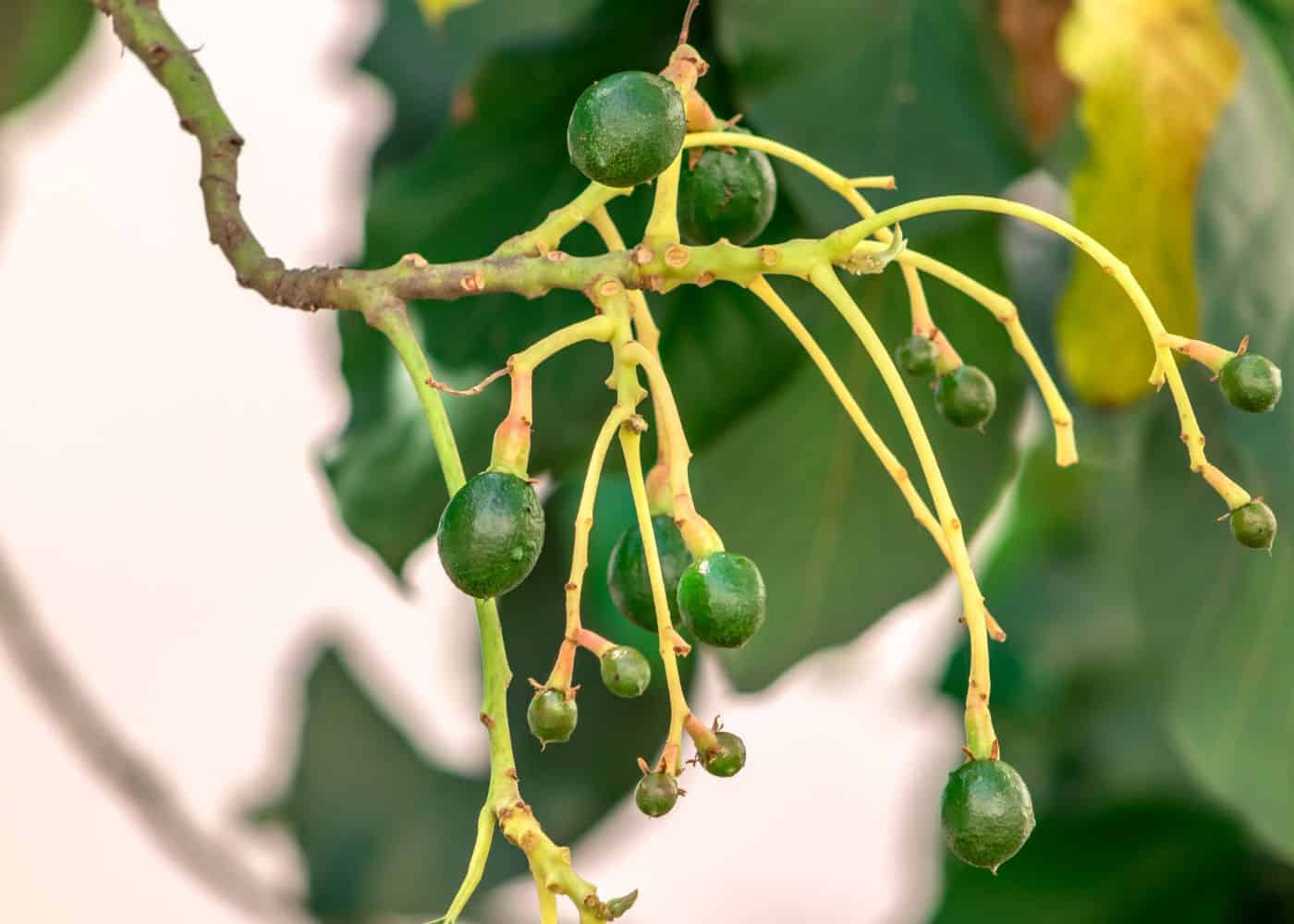
Troubleshooting tips
When it comes to growing an avocado tree, there are many things that can go wrong. Common issues include disease, pest infestations, and poor soil conditions. Fortunately, these problems can usually be prevented or solved with the right care and maintenance.
Disease
Avocado trees are susceptible to a variety of diseases such as root rot, leaf spot, and anthracnose. To prevent the disease from occurring in your tree you should always plant in well-draining soil and avoid over-watering or under-watering your tree. If you notice any signs of disease on your tree (such as discolored leaves or wilting branches) then you should contact a local nursery for advice on how to treat the problem.
Pests infestations
Pests such as aphids, mealybugs, scale insects, and mites can all cause damage to an avocado tree if left unchecked. The best way to prevent pest infestations is by regularly inspecting your tree for signs of pests (such as webbing or sticky residue). If you do find any pests then use insecticidal soap or neem oil to get rid of them quickly before they have a chance to spread further throughout the tree.
Poor soil conditions
Poor soil conditions can lead to stunted growth in an avocado tree so it’s important that you choose the right type of soil when planting one in your garden. You should aim for sandy loam soils which will provide good drainage while still retaining enough moisture for the roots of the plant without becoming waterlogged. Additionally adding organic matter such as composted manure will help improve nutrient levels within the soil which will encourage healthy growth in your avocado tree over time.
By following these tips, you should be able to successfully grow an avocado tree without encountering too many issues. With the right care and maintenance, you can ensure that your tree is healthy and thriving for years to come.
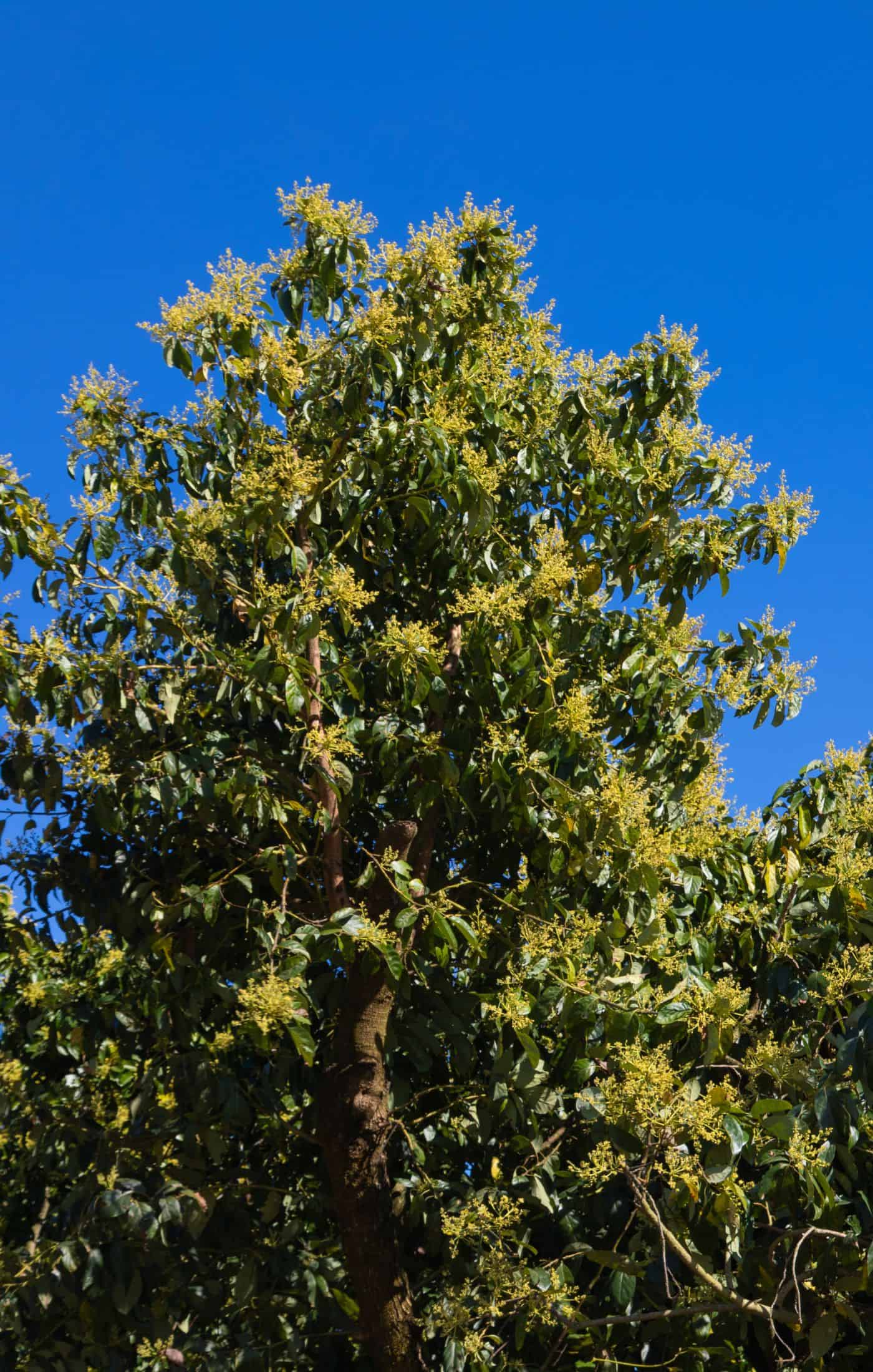
FAQs about the timeline for growing avocadoes
How fast does an avocado tree grow?
Avocado trees can grow quite quickly, depending on the conditions they are planted in. Generally speaking, avocado trees can reach a height of 10-20 feet within three to five years when grown in optimal conditions with plenty of sunlight and water. In more temperate climates, however, it may take up to seven years for an avocado tree to reach its full potential. With proper care and maintenance, an avocado tree can live for decades and produce delicious fruit year after year.
Does it take 9 months to grow an avocado?
Depending on the variety and climate, avocado fruits can take anywhere from 4-12 months to reach maturity on the tree. The time frame is also affected by how well they are cared for; with proper watering and fertilization, they can mature more quickly than if left unattended. Avocado trees require plenty of sunlight and warm temperatures in order to thrive, so planting them in the right location is key for a successful harvest.
Do avocado trees need full sun?
Yes, avocado trees need full sun to thrive. They require at least 6 hours of direct sunlight per day in order to produce healthy fruit and foliage. Without adequate sunlight, the tree may become weak or even die. Additionally, it is important to provide proper irrigation and fertilization for optimal growth and production of avocados. With a little care and attention, you can ensure your avocado tree has all the necessary resources for success.
Is growing an avocado tree hard?
No, growing an avocado tree is not hard. With the right soil and climate conditions, it can be relatively easy to grow a healthy avocado tree in your own backyard. The key is to make sure you provide enough water and sunlight for the plant while also ensuring that it has adequate drainage. Additionally, pruning the branches regularly will help promote strong growth and increase fruit production. With proper care and attention, anyone can successfully grow their own avocado tree.
Conclusion
It may take some time to get your tree established, but with the right care and maintenance, it will be worth the wait. With proper watering, fertilizing, pruning, and other essential tasks, you can expect to harvest avocados in as little as two or three years after planting. If you’re looking for a fun project that yields delicious results, growing an avocado tree is definitely worth considering. So don’t wait any longer – start growing your own avocado tree today and enjoy its fruits for many years to come.
Resources
- Tips for growing avocado trees indoors
- Everything you need to know about planting avocado trees
- How to fertilize an avocado tree
- How to prune an avocado tree
References
- Jukes, J. (2017). How to Grow Your Avocado. CreateSpace Independent Publishing Platform.
- Schaffer, B. A., Wolstenholme, B. N., & Whiley, A. W. (2013). The Avocado: Botany, Production and Uses (pp. 61-63). CABI.
- How to Grow Your Own Avocado Tree from the Seed
Need more info?
Are you interested in learning more about how long does it take to grow an avocado tree? Here are our best articles about it!


